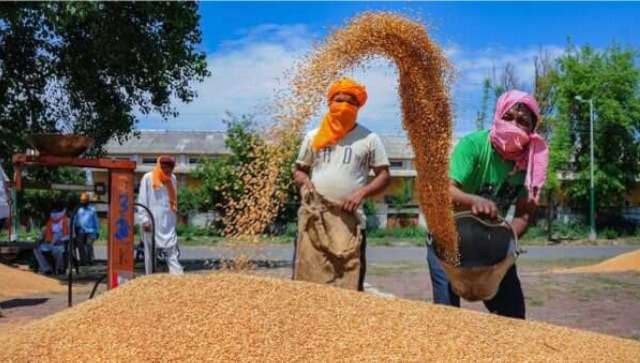
Free rations helped to keep India's poverty low during pandemic: IMF
Poverty levels were as low as 0.8 per cent in the pre-pandemic year in 2019, and food transfers provided to the poor under PMGKAY, were instrumental in ensuring that it remained at that low level in the pandemic year 2020

An International Monetary Fund (IMF) report has shown that during the COVID pandemic, food subsidies managed to keep extreme poverty in the country at low levels.
The latest IMF paper, published on April 5, found that extreme poverty (less than PPP USD 1.9 per person per day) in India was less than 1 per cent in 2019 and it remained at that level even during the pandemic year of 2020.
According to the paper, the poverty levels were as low as 0.8 per cent in the pre-pandemic year in 2019, and food transfers provided to the poor under schemes such as Pradhan Mantri Garib Kalyan Anna Yojana (PMGKAY), were instrumental in ensuring that it remained at that low level in 2020.
“Extreme poverty was as low as 0.8 per cent in the pre-pandemic year 2019, and food transfers were instrumental in ensuring that it remained at that low level in the pandemic year 2020,” the paper said.
Cushioning of economic fallout
The free foodgrains, which turned out to be an insurance for the poor, cushioned the economic fallout of the pandemic and prevented any significant spike in extreme poverty levels during 2020, said the IMF paper.
The IMF paper has been co-authored by Surjit Bhalla, executive director, IMF for India, Bangladesh, Bhutan and Sri Lanka and former part-time member of Prime Minister’s Economic Advisory Council; New York-based economist Karan Bhasin; and Arvind Virmani, former chief economic adviser to the government of India.
Under the PMGKAY, which was launched in March 2020, the Centre provides 5 kg food grains per month for free. The additional free grain is over and above the normal quota provided under the National Food Security Act (NFSA) at a subsidised rate of 2-3 per kilogram.
Last month, the Union Cabinet had extended the PMGKAY scheme till September 2022.
Also read: No state provided 100 days of work under MGNREGA in FY22: Govt data
Definition of extreme poverty
Quoting the definition of extreme poverty by World Bank as the share of people living under $1.9 every day as per 2011 purchasing power parity terms, the paper suggested that the low level of extreme poverty– around 0.8 per cent in both 2019 (0.76 per cent) and 2020 (0.86 per cent) – meant that the official poverty line should now be PPP $3.2.
“Real inequality, as measured by the Gini coefficient, has declined to near its lowest level reached in the last forty years — it was 0.284 in 1993-94 and in 2020-21 it reached 0.292…Possibly the more surprising result from the incorporation of food subsidies into the calculation of poverty is that extreme poverty has stayed below (or equal to) 1 per cent for the last three years,” said the paper.
A note of caution
Some economists, however, warned that to use that poverty line, income distribution is required since $1.9 is income. According to one expert, officially, India does not produce income distribution data and only expenditure data, which is never the same.
Using an international poverty line is problematic because the same metric $1.9 PPP is applied to all parts of the country and both rural and urban. And experts felt that in India the price difference can be as much as 30 per cent between the high cost states and lower cost states and the gap widens when it is between rural and urban areas.
The paper noted that the PPP $1.9 poverty line is no longer appropriate for India. “Nevertheless, it is accepted as the extreme poverty line around the world and used as a reference standard for claims about the elimination of extreme poverty. By this standard, India can reasonably claim that in pre-pandemic India was on the verge of eliminating extreme poverty,” it said.
The pandemic shock is largely a temporary income shock, said the IMF report, adding that a temporary fiscal policy intervention was the fiscally appropriate way to absorb a large part of the shock.


